 Assemblage art is what I'd describe as 3-D collage. Basically you use found objects (usually vintage or distressed) and recombine them to make art. You can read more about it and see some very fine examples here.
Assemblage art is what I'd describe as 3-D collage. Basically you use found objects (usually vintage or distressed) and recombine them to make art. You can read more about it and see some very fine examples here.I'm working on my first assemblage piece but I've been having kind of a tough time with it. I like order, neatness, organization and logic; I'm drawn to patterns and symmetry versus spontaneity and chaos. The soup cans in my pantry are arranged in alphabetical order; so are the spice jars. None of my natural inclinations are particular helpful to me for this project.
Fortunately the May/June issue of Cloth Paper Scissors magazine has a great article/mini- workshop on assemblage art by Amy Hitchcock, which helped me understand a bit more about the how-to aspects of assemblage. The why was still a problem for me, though. As in: why put all this junk together when I could be making something useful, like a quilt?
 For a while I sat and looked at the assemblage ephemera kit I bought over at Etsy.com and waited for the junk to spark something. The vendor did send me some pretty interesting bits: a doll's head, shredded money, a little computer board, a vintage book page, a tiny glass light bulb, dice, springs, etc., but none of them really related to each other (other than being a collection of stuff you might find in anyone's junk drawer.)
For a while I sat and looked at the assemblage ephemera kit I bought over at Etsy.com and waited for the junk to spark something. The vendor did send me some pretty interesting bits: a doll's head, shredded money, a little computer board, a vintage book page, a tiny glass light bulb, dice, springs, etc., but none of them really related to each other (other than being a collection of stuff you might find in anyone's junk drawer.)Since sitting and staring at the pile didn't result in any ideas, I started separating the ephemera into categories: paper, glass, metal, plastic. No, I didn't alphabetize them, but I was tempted. Then I noticed that the doll's head had the same color hair as I did about fifteen years ago. She also had painted-shut eyes, as if she were asleep, and dreaming.
I could relate; twenty years ago I was all about the dreams. Me, the dreamy little housewife, changing diapers, scrubbing floors and folding laundry, all the while constantly writing in my head, or furiously typing up a few pages while the kids napped, all the while thinking about how incredible it would be to see my name on the cover of a book.
It wasn't all dreamy, though. I clearly remember my perpetual state of frustration, trying to find the time to write and pursue publication and being rejected week after week after month after year, all while juggling the kids and the house and chores and family obligations. All alone; no one to talk to about it. All those negative comments from well-meaning friends and family: you'll never get published, you should be happy with what you have, stop deluding yourself. I put up with ten straight years of that; even now I wonder, how did I manage to keep writing?
Still reminiscing, I put the little light bulb over the doll's head. If she were wet, I thought, she'd be me in the shower, shrieking as the title for StarDoc came to me. That was really the moment everything changed for me and my writing, and ultimately led to my first published novel, my first series, and my career as a professional writer. And in true lightbulb fashion, I finally got it. Assemblage art is symbolic, like a visual metaphor for whatever the artist is trying to communicate. I wasn't compiling random bits; I was supposed to take the pieces that had a personal vibe for me and put them together to tell a story.
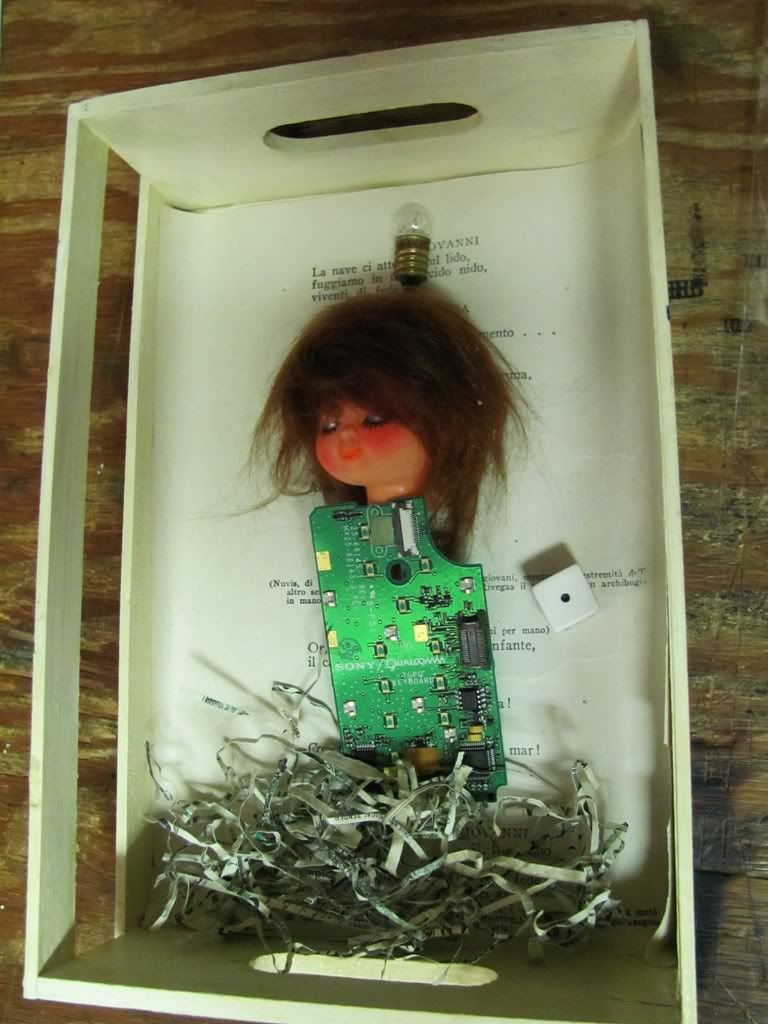 I found a little crate I used to use for the business cards I collected at writer conferences over the years (all of which are now alphabetically filed away in a card holder) and began assembling in earnest. The background is a page; the focal point is the doll. I put the little lightbulb over her head, positioned the computer board to serve as her torso, and scattered some shredded money at the bottom. It all began to make sense to me: the burden of inspiration, the delight of dreams, the challenge of technology, the achievements, the disappointments. The single di, for the gamble that is each book. All of it playing out against the work.
I found a little crate I used to use for the business cards I collected at writer conferences over the years (all of which are now alphabetically filed away in a card holder) and began assembling in earnest. The background is a page; the focal point is the doll. I put the little lightbulb over her head, positioned the computer board to serve as her torso, and scattered some shredded money at the bottom. It all began to make sense to me: the burden of inspiration, the delight of dreams, the challenge of technology, the achievements, the disappointments. The single di, for the gamble that is each book. All of it playing out against the work. I have some other elements to add so I'm not finished, and I still have to figure out how to nail or glue everything in place, but it felt good to finally get it. I even have a title for the piece: Bruised Dreamer.
When writers tell a story, we do often start with a lot of unconnected, random bits. A great character, a fiery conflict, an amazing setting. Building those elements into something cohesive and coherent is what drives us: pulling it all together, assembling it into something with meaning. Often we're not successful and it still looks like a pile of random stuff, or it doesn't convey our vision, or under scrutiny it falls apart. But when we make the right connections, all the story ephemera can be assembled into something really wonderful, something that another person can explore and understand and be entertained by; something that will add to their cache of life's delight. And isn't that why we write?

 I am delighted to report that Tiger Eye is eminently playable and genuinely fun, even for a pinball-era gimp like me. You're not required to run around fighting in the street or ripping out your opponent's spine; instead you face a series of fun and very interesting puzzles, riddles and problem-solving challenges that you work through on different levels as the game follows the story in the novel. Intelligence and common sense are your best allies when you play this game. Speaking as a handicapped user, I think it's extremely user-friendly for folks like me who have limited dexterity, as all of the play is point-and-click with the mouse.
I am delighted to report that Tiger Eye is eminently playable and genuinely fun, even for a pinball-era gimp like me. You're not required to run around fighting in the street or ripping out your opponent's spine; instead you face a series of fun and very interesting puzzles, riddles and problem-solving challenges that you work through on different levels as the game follows the story in the novel. Intelligence and common sense are your best allies when you play this game. Speaking as a handicapped user, I think it's extremely user-friendly for folks like me who have limited dexterity, as all of the play is point-and-click with the mouse.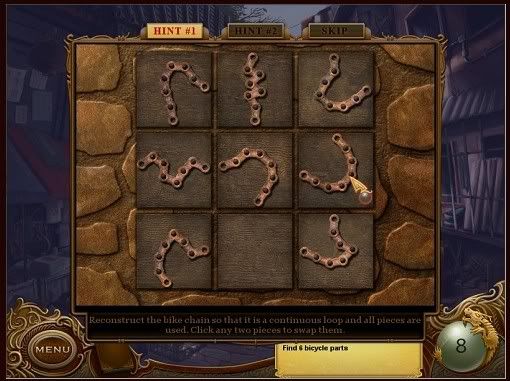 The game graphics are terrific; the narrators' voices are perfect for the characters they portray, and I enjoyed the soundtrack so much I'm going to purchase it. There's also options to get hints on how best to solve the challenges, a orb that guides you when you can't find something, and timed bonus levels to add points to your score. The thing I liked most was the ever-changing degree of difficulty; the challenges ranged from simple to very tough, and the mix kept me on my toes and involved (this bicycle chain challenge is one that finally stumped me on my first try, but I'm going back next time to kick its evil twisty ass.)
The game graphics are terrific; the narrators' voices are perfect for the characters they portray, and I enjoyed the soundtrack so much I'm going to purchase it. There's also options to get hints on how best to solve the challenges, a orb that guides you when you can't find something, and timed bonus levels to add points to your score. The thing I liked most was the ever-changing degree of difficulty; the challenges ranged from simple to very tough, and the mix kept me on my toes and involved (this bicycle chain challenge is one that finally stumped me on my first try, but I'm going back next time to kick its evil twisty ass.) As a mom who routinely drops thirty to fifty bucks on video games for her kids, I also appreciate Passionfruit Game's prices. You can purchase the basic game for as low as $6.99, or choose an upgraded version that comes with extra bonus bits and perks (I preordered the middle/premium $9.99 version.) Mac users, you have to wait until next month for your version, but it's worth it. I know Marjorie's readership will love how the game follows the story of the novel, but I don't think you have to be a Dirk & Steele fan to enjoy playing it. Be warned, though, it will probably make you want to read the novel.
As a mom who routinely drops thirty to fifty bucks on video games for her kids, I also appreciate Passionfruit Game's prices. You can purchase the basic game for as low as $6.99, or choose an upgraded version that comes with extra bonus bits and perks (I preordered the middle/premium $9.99 version.) Mac users, you have to wait until next month for your version, but it's worth it. I know Marjorie's readership will love how the game follows the story of the novel, but I don't think you have to be a Dirk & Steele fan to enjoy playing it. Be warned, though, it will probably make you want to read the novel.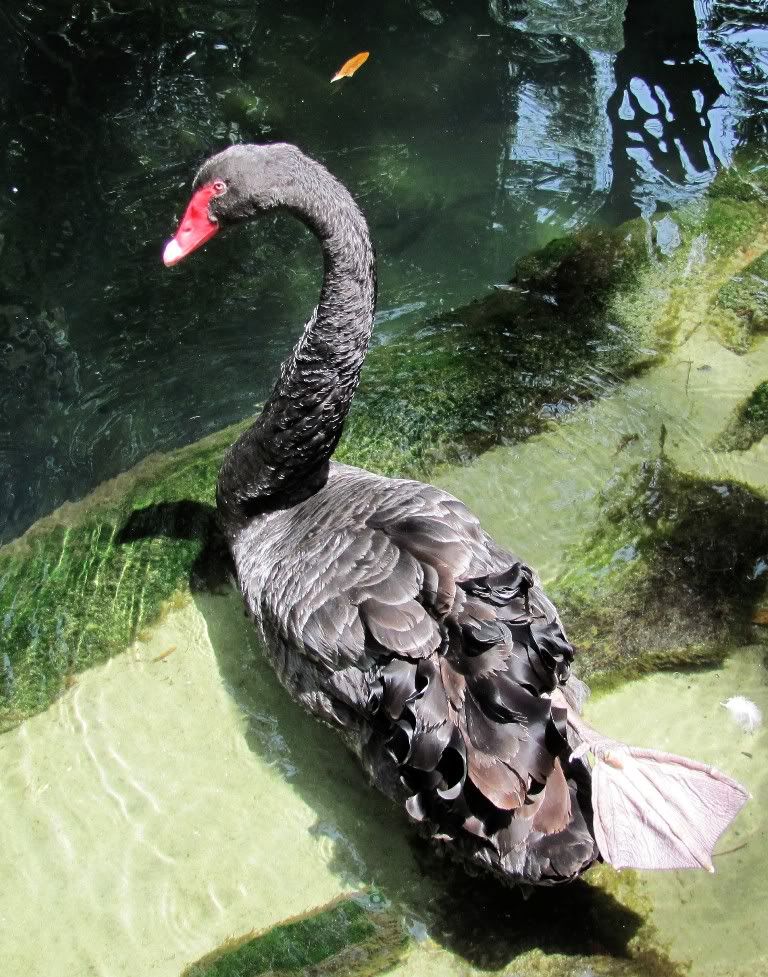

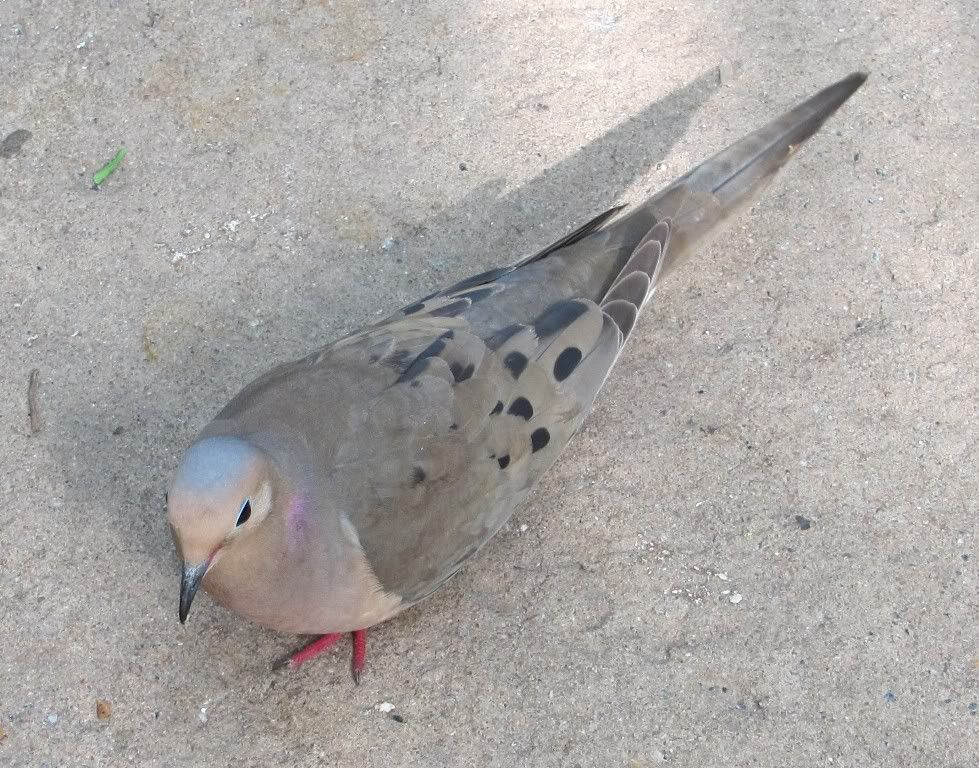

 Gerard over at
Gerard over at 
 Today my guy is flying back from an overseas job, and while I have faith in the airline he picked, I know I won't be able to write from the time his plane takes off until it lands. I'll be too busy pacing the floors. Because I know his itinerary and my capacity for air-travel anxiety, I planned for this and wrote a little extra yesterday.
Today my guy is flying back from an overseas job, and while I have faith in the airline he picked, I know I won't be able to write from the time his plane takes off until it lands. I'll be too busy pacing the floors. Because I know his itinerary and my capacity for air-travel anxiety, I planned for this and wrote a little extra yesterday.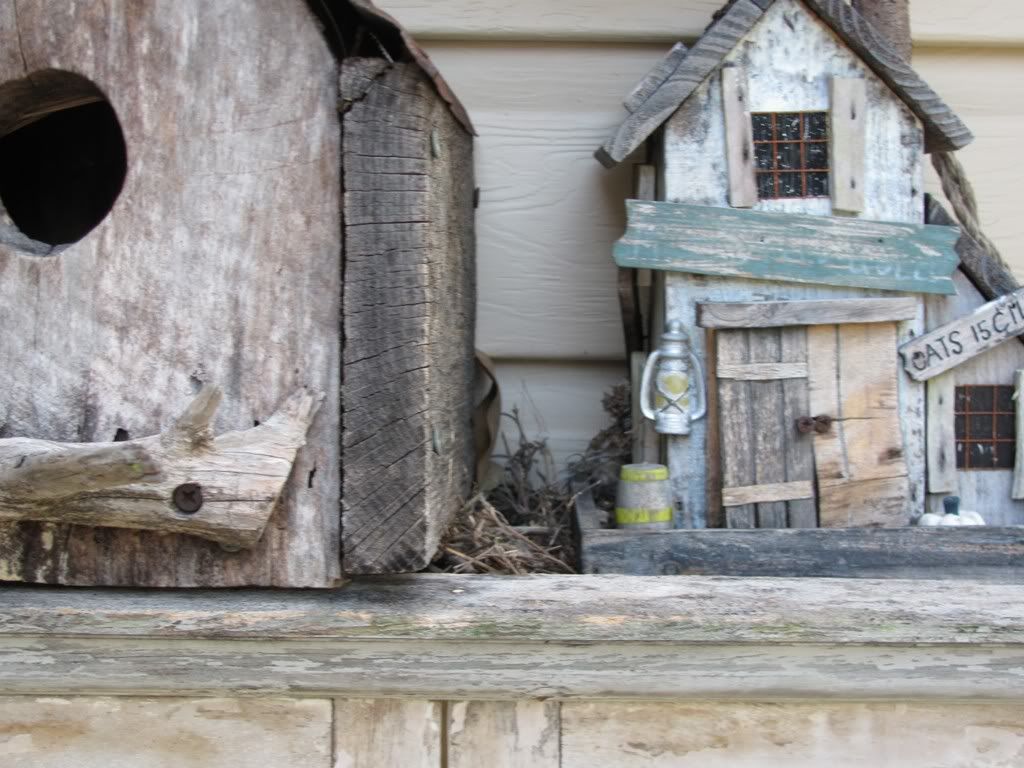

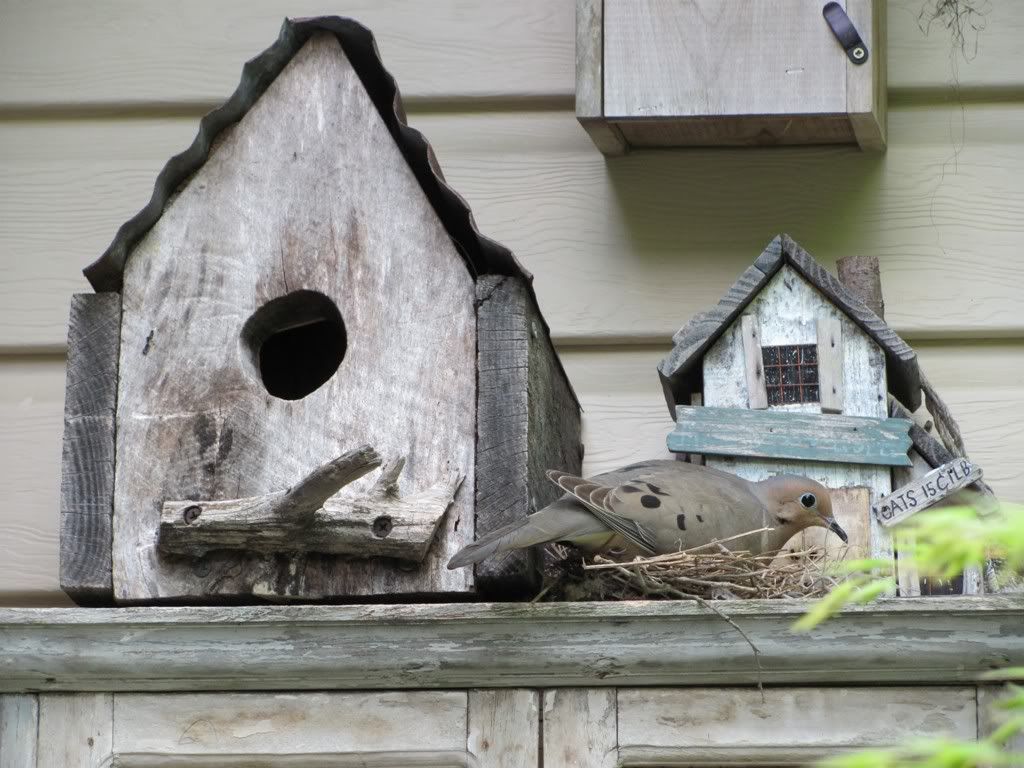

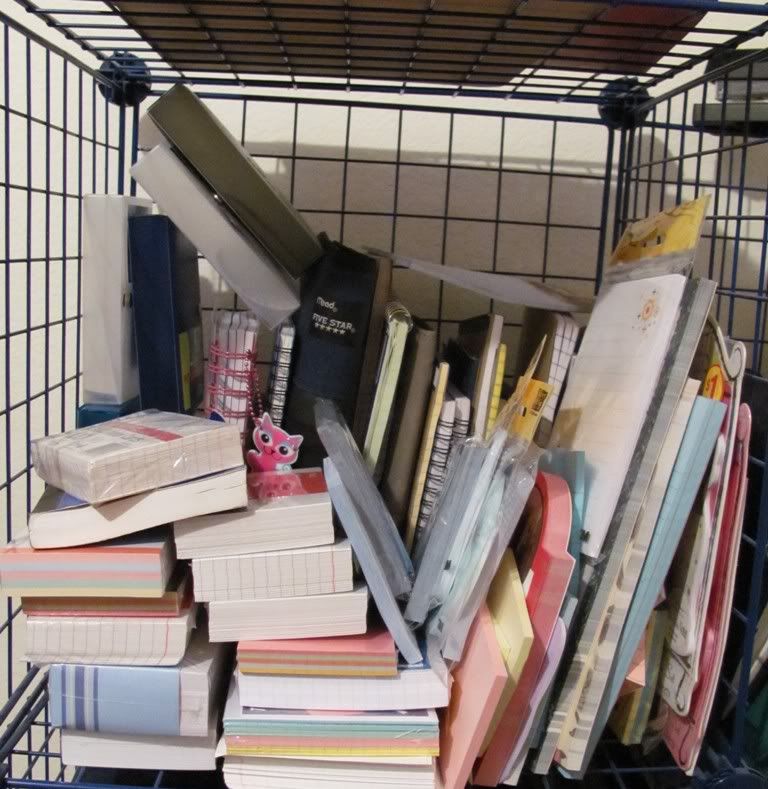 After reading all the creative tips and stuff you guys do to keep organized I don't feel quite so obsessive (and I admit, I am a Post-it note, notepad, index card and notebook collector/addict, too. One can never have too many places to jot down the occasional killer line of dialogue.)
After reading all the creative tips and stuff you guys do to keep organized I don't feel quite so obsessive (and I admit, I am a Post-it note, notepad, index card and notebook collector/addict, too. One can never have too many places to jot down the occasional killer line of dialogue.)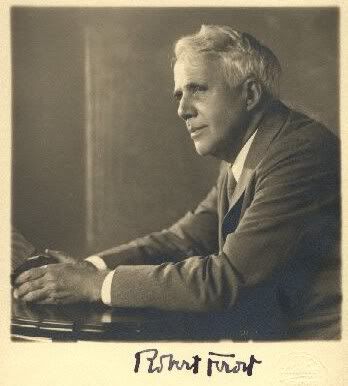 To be honest, I have a love-hate relationship with much of Frost's poetry. Sometimes nothing else will do, and I need Robert to remind me about
To be honest, I have a love-hate relationship with much of Frost's poetry. Sometimes nothing else will do, and I need Robert to remind me about  My introduction to Robert Frost was his poem Fire and Ice, which I read as a teenager and (even then) knew I was in trouble. He assured me of everything I suspected but didn't want to believe about human beings. He even tried to give me some fairly shrewd and even prophetic advice with Choose Something Like a Star, but as a youngster I was too wild and head-strong to climb that stairway to heaven. I turned my back on him and buried myself in the Romantics and the Experimenters, and every time one of his verses would come back to haunt me I'd chase it off with some Rilke or Browning or Rosetti.
My introduction to Robert Frost was his poem Fire and Ice, which I read as a teenager and (even then) knew I was in trouble. He assured me of everything I suspected but didn't want to believe about human beings. He even tried to give me some fairly shrewd and even prophetic advice with Choose Something Like a Star, but as a youngster I was too wild and head-strong to climb that stairway to heaven. I turned my back on him and buried myself in the Romantics and the Experimenters, and every time one of his verses would come back to haunt me I'd chase it off with some Rilke or Browning or Rosetti.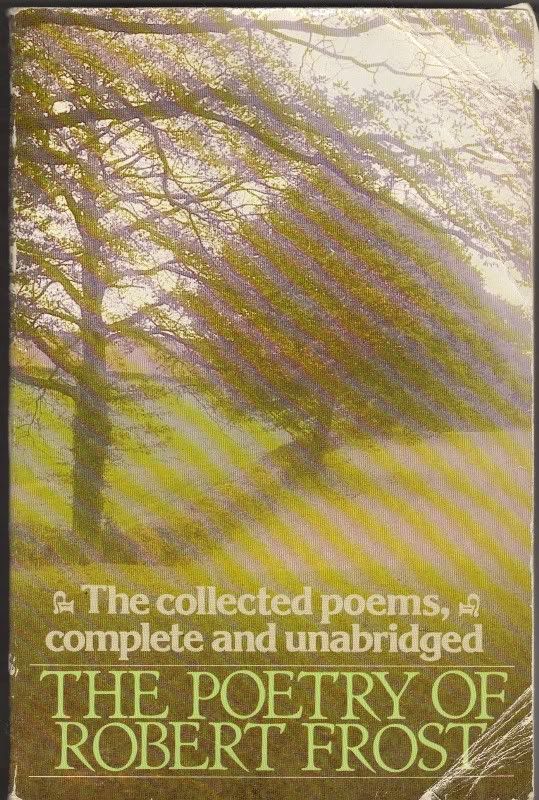 Age and experience made a uncertain peace between me and Frost; I finally accepted that what I wanted to believe about people mostly belonged in fiction, not real life. He helped me get past my grandmother's death without tromping on my grief. He left me alone by those deep, dark and lovely woods on a snowy evening, but he wrapped me up before he rode on. The second time he asked of me a certain height, I still stayed on the ground, but I was better able to appreciate how much he himself must have wanted to attain that safe distance. I think now he fought for it his entire life.
Age and experience made a uncertain peace between me and Frost; I finally accepted that what I wanted to believe about people mostly belonged in fiction, not real life. He helped me get past my grandmother's death without tromping on my grief. He left me alone by those deep, dark and lovely woods on a snowy evening, but he wrapped me up before he rode on. The second time he asked of me a certain height, I still stayed on the ground, but I was better able to appreciate how much he himself must have wanted to attain that safe distance. I think now he fought for it his entire life.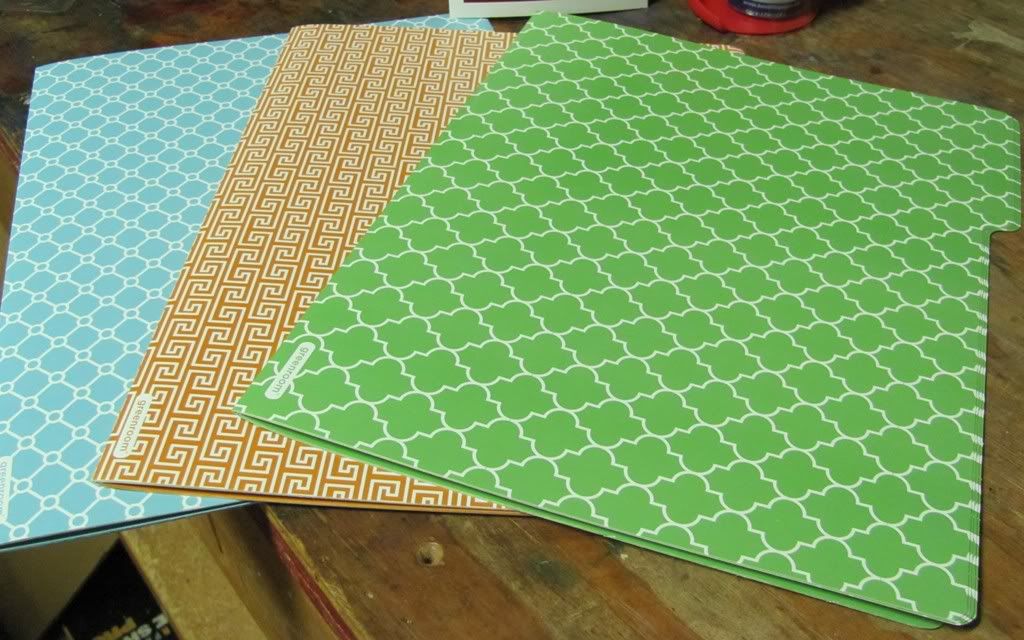 Greenroom Recycled File Folders: You'd never know it to look at them, but these folders are made with paper that contains 60% recycled paper fiber and are printed with nontoxic soy-based ink. I picked them up at first because they're colorful and attractive, so finding out that they're also eco-friendly was a nice bonus. ($3.99 for a pack of 12)
Greenroom Recycled File Folders: You'd never know it to look at them, but these folders are made with paper that contains 60% recycled paper fiber and are printed with nontoxic soy-based ink. I picked them up at first because they're colorful and attractive, so finding out that they're also eco-friendly was a nice bonus. ($3.99 for a pack of 12) 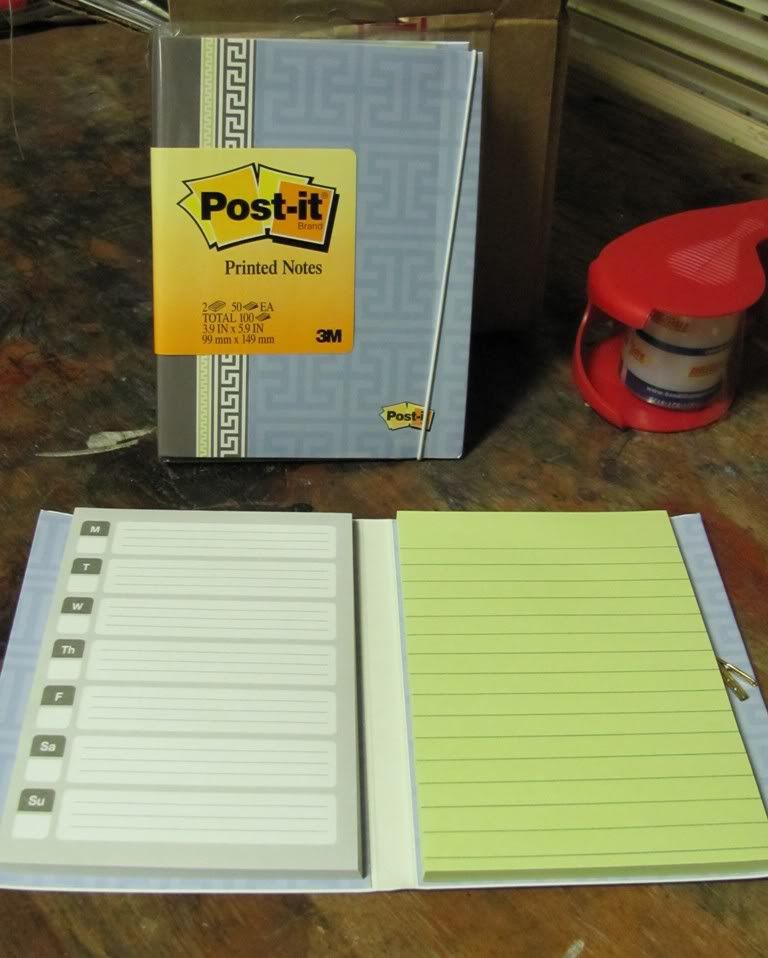 Post-it Printed Notes Book: 3M never quits evolving the humble sticky note, and this time they've come up with something that is really helpful and purse-friendly: a little book-type folder that holds two 3.9" X 5.9" Post-it pads. It comes with a lined pad for taking notes, and a week-at-a-glance pad which has a small space where you can jot down reminders, appts and other things you need to remember. There's also an elastic band to hold it closed. My only complaint is that it's not designed with pockets to be refillable, but I think once you use up the pads that come with it you could certain use a glue stick to put in a couple of replacements yourself. ($7.99)
Post-it Printed Notes Book: 3M never quits evolving the humble sticky note, and this time they've come up with something that is really helpful and purse-friendly: a little book-type folder that holds two 3.9" X 5.9" Post-it pads. It comes with a lined pad for taking notes, and a week-at-a-glance pad which has a small space where you can jot down reminders, appts and other things you need to remember. There's also an elastic band to hold it closed. My only complaint is that it's not designed with pockets to be refillable, but I think once you use up the pads that come with it you could certain use a glue stick to put in a couple of replacements yourself. ($7.99) Project Case: When I'm working on a chapter, a galley or another stack of printed pages I usually paperclip or rubber-band it and keep it in a paper folder. This doesn't always keep the pages neat or clean, though, especially if I have to take it along with me and toss it in the back seat of the car or stick it in a tote bag. I don't always want to lug my briefcase along with me, either, so it's been a problem. This project case is durable, rigid, seals and latches, and is light enough to carry anywhere. It also has enough room to fit my pens, highlighters and other editing tools, and the flat bottom serves as a nice impromptu lap desk. ($4.99)
Project Case: When I'm working on a chapter, a galley or another stack of printed pages I usually paperclip or rubber-band it and keep it in a paper folder. This doesn't always keep the pages neat or clean, though, especially if I have to take it along with me and toss it in the back seat of the car or stick it in a tote bag. I don't always want to lug my briefcase along with me, either, so it's been a problem. This project case is durable, rigid, seals and latches, and is light enough to carry anywhere. It also has enough room to fit my pens, highlighters and other editing tools, and the flat bottom serves as a nice impromptu lap desk. ($4.99) 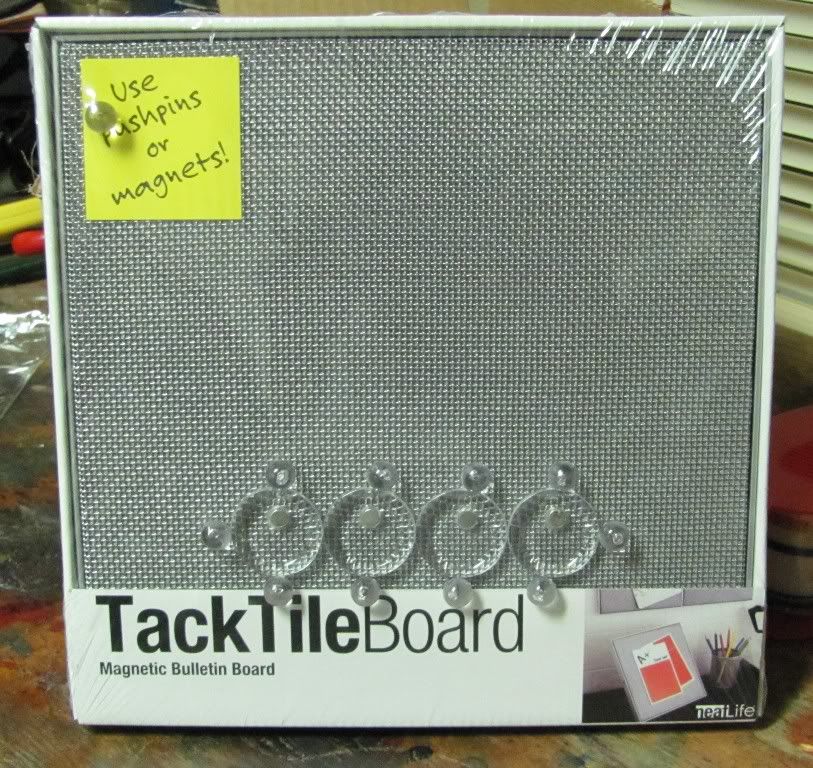 Tack TileBoard Magnetic Bulletin Board: I have problems grasping small objects, and I've never found a small noteboard I can park anywhere and that doesn't require me to fumble with push-pins -- until now. This 9" X 9" board is small enough to fit anywhere, comes with 11 pushpins and 4 magnets, can be mounted on a wall, or used with its easel stand on any flat surface. The steel mesh surface is certainly going to be more durable than cork, which tends to disintegrate from use over time, and the magnets are a lot easier for me to handle than those annoying little pins. Also, if you want a bigger surface to work with, you can hang two or more of these together on a wall. ($14.99)
Tack TileBoard Magnetic Bulletin Board: I have problems grasping small objects, and I've never found a small noteboard I can park anywhere and that doesn't require me to fumble with push-pins -- until now. This 9" X 9" board is small enough to fit anywhere, comes with 11 pushpins and 4 magnets, can be mounted on a wall, or used with its easel stand on any flat surface. The steel mesh surface is certainly going to be more durable than cork, which tends to disintegrate from use over time, and the magnets are a lot easier for me to handle than those annoying little pins. Also, if you want a bigger surface to work with, you can hang two or more of these together on a wall. ($14.99)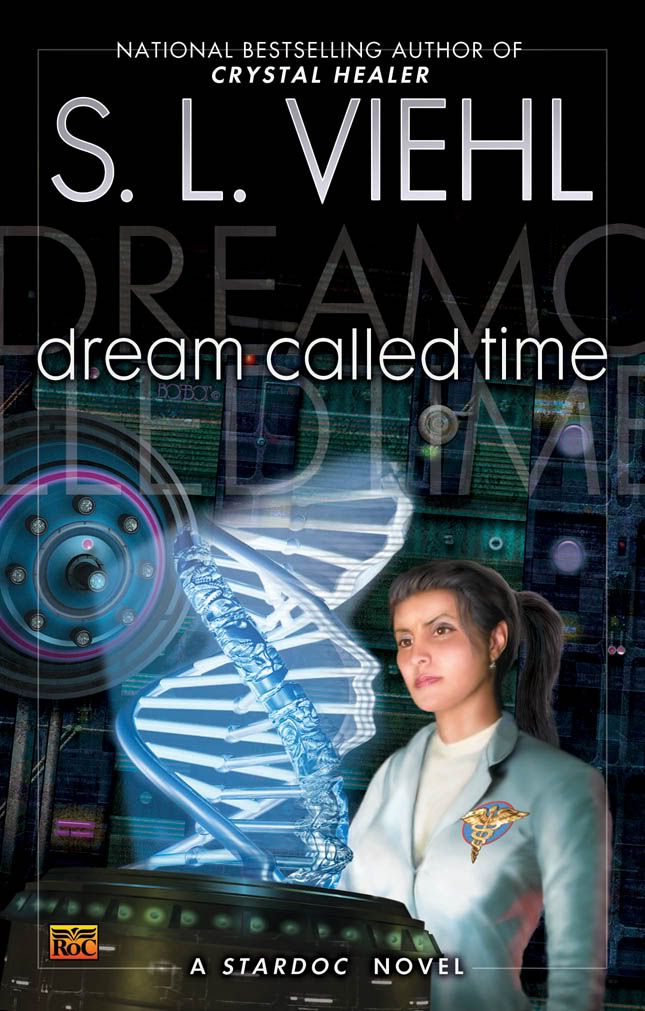 The proofs for Dream Called Time are sitting on my desk, waiting, ready to be corrected. One more read-through for typos, fax any corrections to NY, and I'm finished another series.
The proofs for Dream Called Time are sitting on my desk, waiting, ready to be corrected. One more read-through for typos, fax any corrections to NY, and I'm finished another series.
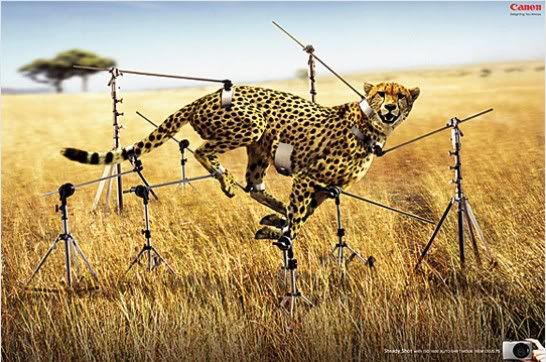
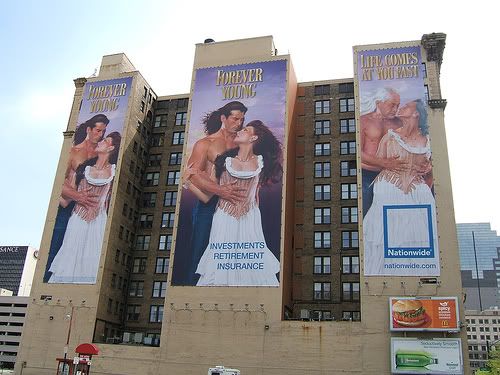
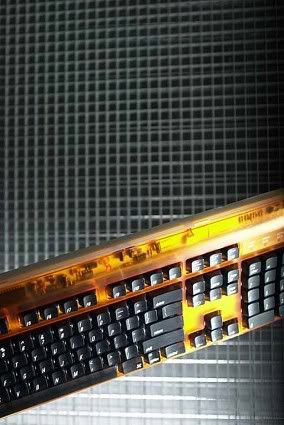 ˙ʇıɟ ʎssıɥ ɐ sɐɥ ɹǝƃƃolq uʍop ǝpısdn ʞuıl ǝɥʇ ǝpoɔ oʇ ʎɹʇ ı ǝɯıʇ ʎɹǝʌǝ ǝsnɐɔǝq 'ɥƃnoɥʇ 'sʇuǝɯɯoɔ uı ʞuıl ǝɥʇ ʇnd oʇ ǝʌɐɥ ll’ı ˙ʇxǝʇ ǝɥʇ dılɟ oʇ pǝsn ı ɹoʇɐɹǝuǝƃ ǝɥʇ spuıɟ ǝslǝ ǝuo ou ʇǝq ı puɐ 'ɥƃnoɥʇ 'ʇɟɐɹp ǝɥʇ uo looɔ ʎʇʇǝɹd ʞool sǝop ʇı
˙ʇıɟ ʎssıɥ ɐ sɐɥ ɹǝƃƃolq uʍop ǝpısdn ʞuıl ǝɥʇ ǝpoɔ oʇ ʎɹʇ ı ǝɯıʇ ʎɹǝʌǝ ǝsnɐɔǝq 'ɥƃnoɥʇ 'sʇuǝɯɯoɔ uı ʞuıl ǝɥʇ ʇnd oʇ ǝʌɐɥ ll’ı ˙ʇxǝʇ ǝɥʇ dılɟ oʇ pǝsn ı ɹoʇɐɹǝuǝƃ ǝɥʇ spuıɟ ǝslǝ ǝuo ou ʇǝq ı puɐ 'ɥƃnoɥʇ 'ʇɟɐɹp ǝɥʇ uo looɔ ʎʇʇǝɹd ʞool sǝop ʇı